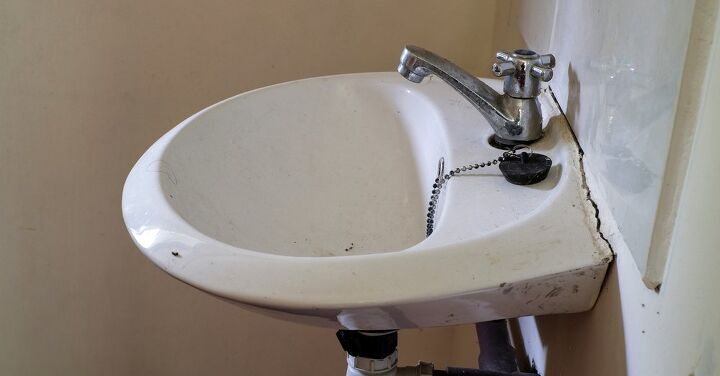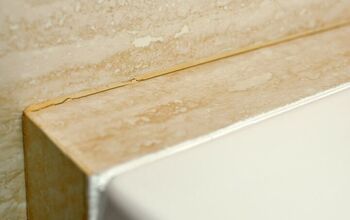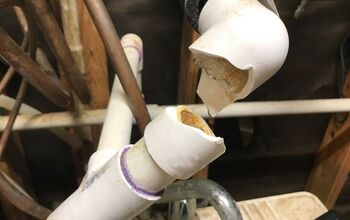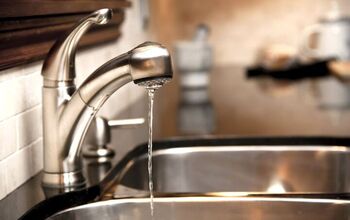What Causes Hairline Cracks In Sinks?

Though there has been a shift in materials used over the last several decades, porcelain is still a popular choice for fixtures of all kinds. Be it bathtubs, toilets, or sinks, porcelain has a natural, beautiful aesthetic that the other materials simply can’t match.
Extreme temperature changes can cause hairline cracks in your sink. Thermal shock occurs when the temperature increases or decreases at a rapid rate. Hairline cracks can eventually become worse if you don’t repair them.
Another thing to keep in mind is that porcelain is not the only material that can experience hairline cracks. Hairline cracks are all too common in sinks. They are those long, thin cracks that can be barely perceptible but can potentially manifest into major damage before long.
Do You Need Kitchen and Bath Repair Services?
Get free, zero-commitment quotes from pro contractors near you.

Why it is Important to Recognize Signs of Damage
As is the case with just about anything in life, if you know what to look for, you can potentially prevent major damage from occurring. After all, hairline cracks are just the beginning of the potential damage. They may not look like much initially, but they can grow into larger cracks or even beginning chipping or breaking.
Being able to understand the causes of hairline cracks can also allow you to take the proper measures to prevent those cracks from occurring. And when prevention is involved, you can keep your sink looking healthy and new for as long as possible.
Rusting
For stone sinks, there are manufacturers that will try to strengthen the integrity of the sinks. They do this by building the sinks with thin sheets of steel that are located on the interior of the sink. Like most metals, steel can rust.
While rust has an unappealing aesthetic to it, there’s more of an issue. When steel rusts, it will swell up. This swelling causes the sink to begin to expand and, eventually, crack from the pressure of continuous expansion.
Some sinks can get away with a little rusting, but any significant amount of rust can cause your stone sink to begin showing hairline cracks throughout.
Force
There is no factor in hairline cracks quite as consistent as actual force applied to the fixture. With more fragile materials like porcelain, force is all too common a cause in damage to a sink. This can happen in a lot of different ways, too.
Moving it in or out of the bathroom, hitting it with something heavy, or even dropping a heavy tool on it can cause cracks of all sizes. This is easily avoidable, though, with a little patience and care. Accidents can happen, though, leading to tiny cracks to begin forming.
Changes in Temperature
There are different materials that can be vulnerable to large changes in temperature, albeit for different reasons. Any change in temperature can cause expansion or retraction of a material. In most cases, this is very minor and won’t mean much for your fixture.
But in severe cases of temperature change, that expansion or retraction can put too much strain on the material of your sink. When this happens, hairline cracks can begin to form due to those temperature changes and the stresses they bring.
Porcelain, and a few other materials, are also quite sensitive to rapid changes in temperature. For instance, if you have a cool bathroom sink made of porcelain and pour boiling water down the drain, it could cause slight cracks to form.
Naturally Occurring Hairline Cracks
For some sinks made of stone, they are made when certain molten materials are folded and given a chance to harden. What you might not know is that these folds create a grain that occurs in the stone naturally. Some homeowners actually love it because it is one of the more unique features for stone sinks.
Some natural stone materials, however, can also have weaknesses in certain areas. This can create hairline cracks that will develop over time. With higher-quality stone sinks this is less likely to occur unless it has accrued some age. When this happens, reinforce or repair those cracks to keep them from growing any larger.
Fixing Hairline Cracks in Porcelain Sinks
Thankfully, there are remedies for most hairline cracks. Noticing them is a good first step towards preventing further growth. If the issue is allowed to persist, it can develop into more and more cracks, weakening the integrity of the sink.
Step 1: Clean and Smooth Over the Cracked Surface
First, you need to clean the surface of the sink. This is to remove any debris or scum that may be sitting on the affected area. Don’t scrub too hard, though: you can cause more chipping to develop. Dry the area when you are done.
Then, smooth out the cracked area using an emery cloth of medium grit, soaking it in rubbing alcohol first. Rub the cloth over the cracked area. The alcohol should dry relatively quickly but give it the time it needs to do so.
Step 2: Preparing the Compound
The time has come to prepare the compound used to repair the crack. You can get this at a local hardware store; make sure to follow the directions from the manufacturer. Mix your compound on a smooth, clean surface to avoid issues.
Next, you will want to mix in that compound in with a little bit of high-gloss paint that matches the shade of your sink. You can mix it up with a small wood dowel until you get it to be the shade that you are after.
Step 3: Application and Cleanup
Scoop a little bit of your compound onto a blade or putty knife and spread it out over the surface of the crack. Be sure that you press down thoroughly to get the crack to fill in the void. Make sure that you overlap the very edges of the crack in order to get full coverage.
Scrape off as much of the excess as you can with the edge of your blade. Remember, you want the compound to sit flush over the affected area. Use a cotton swab and some nail polish remover to get the last of the excess off when the compound has had a chance to dry.
Fixing Hairline Cracks in Ceramic Sinks
Ceramic is also susceptible to hairline cracks, much the same as porcelain is. Thankfully, though, the repair process is very similar, too. So if you notice any hairline cracks pop up, you can rest assured that there is a fairly quick remedy to be had.
Step 1: Cleaning the Area
Much the same as with a porcelain sink, it is important to clean the impacted area first. This is to ensure that the crack has no debris to create discrepancies in the impacted area. When you have finished cleaning the area, removing grease, dirt and grime, make sure that you properly dry the area to ensure that the epoxy adhesive will stick to the area.
Step 2: Applying the Epoxy
Now comes time to fill in the crack. You can use an epoxy adhesive to do the job; a bead or so should do the trick for most hairline cracks. You will need something with a very fine point like a toothpick to push the adhesive into the crack.
Be sure to wipe away any excess epoxy using a damp sponge to do so but be careful to not wipe away the epoxy covering the area.
Step 3: Paint
After you have filled in the impacted area, all that is left to do is apply a single coat of paint. Make sure you get a tint that matches the sink so that the area doesn’t stand out. Let the paint dry according to manufacturer regulations and your crack has been fixed.
Do You Need Kitchen and Bath Repair Services?
Get free, zero-commitment quotes from pro contractors near you.

Related Guide

We are a team of passionate homeowners, home improvement pros, and DIY enthusiasts who enjoy sharing home improvement, housekeeping, decorating, and more with other homeowners! Whether you're looking for a step-by-step guide on fixing an appliance or the cost of installing a fence, we've here to help.
More by Upgraded Home Team













![The 10 Best Table Saws - [2022 Reviews & Buyer's Guide]](https://cdn-fastly.upgradedhome.com/media/2023/07/31/9070645/the-10-best-table-saws-2022-reviews-buyer-s-guide.jpg?size=350x220)













